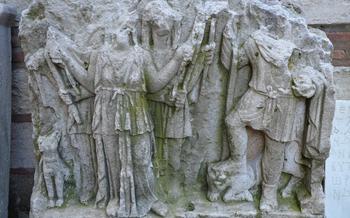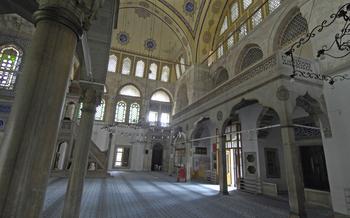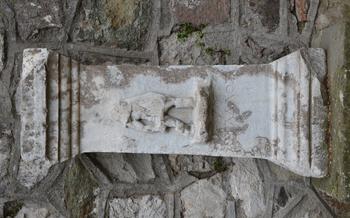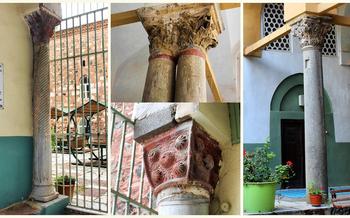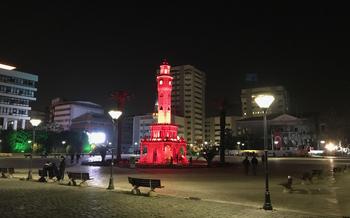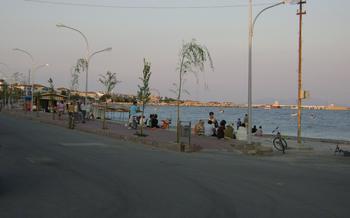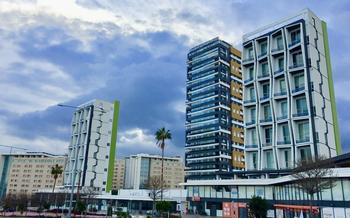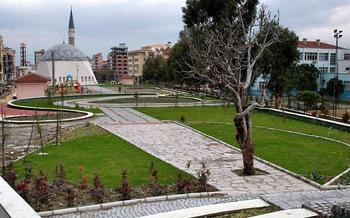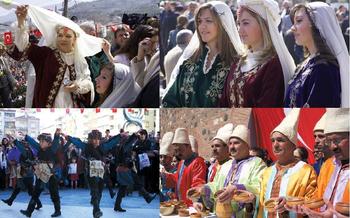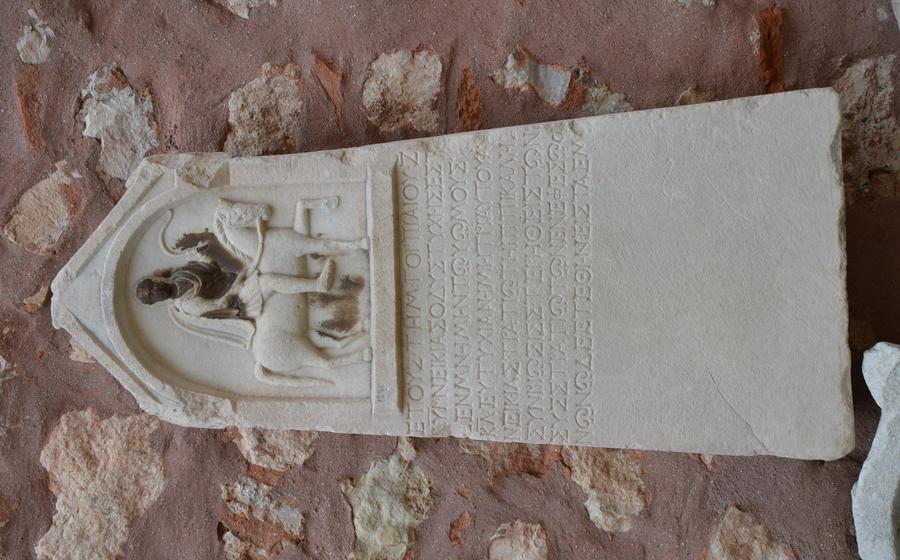
Kula Historic Houses
- A Journey Through History: Kula Historic Houses
- Step into the Past: Exploring the Neighborhood
- Architectural Masterpieces: A Closer Look
- A House Museum: The Kula Museum
- The Art of Woodcarving: A Living Tradition
- Textile Treasures: Handcrafted Kilims
- Culinary Delights: A Taste of Kula
- Festivals and Celebrations: A Lively Calendar
- Natural Wonders: Exploring Kula's Surroundings
- Off the Beaten Path: Hidden Gems
- Accommodation Options: Where to Stay
- Transportation Tips: Getting to Kula
- Practical Considerations: What to Know
- Planning Your Trip: Itinerary Suggestions
- Insider Tip: Unveiling Local Secrets
A Journey Through History: Kula Historic Houses
In the heart of Manisa, nestled between lush green valleys and the majestic Mount Sipylus, lies Kula, a town steeped in history and cultural heritage. Step into this charming town, and you'll be transported back in time as you wander through its cobblestone streets, lined with beautifully preserved historic houses that tell the story of Kula's rich past.
These historic houses, known as Kula Evleri, are not mere structures; they are living testaments to the architectural prowess and cultural legacy of the region. Built during the Ottoman period, these houses showcase a captivating blend of Islamic and Byzantine architectural styles, creating a unique and harmonious ensemble. The intricate details, delicate carvings, and ornate embellishments on these houses reflect the skill and artistry of the master craftsmen who built them.
Preservation efforts have been meticulously undertaken to maintain the authenticity and integrity of these historic houses, ensuring that they continue to stand as symbols of Kula's rich heritage. Today, these houses are not merely architectural wonders but also serve as cultural hubs, hosting exhibitions, workshops, and events that celebrate the town's vibrant history and traditions.
Step into the Past: Exploring the Neighborhood
As you wander through the narrow cobblestone streets of Kula's historic district, you'll feel like you've stepped back in time. Admire the traditional Ottoman mansions, each with its unique architectural details and intricate carvings. Discover hidden courtyards adorned with colorful flowers and lush greenery. The neighborhood exudes a sense of tranquility, inviting you to slow down and savor the moment. Experience the local charm as you interact with friendly residents who are always eager to share stories about their beloved town. Kula's historic houses are not just architectural wonders; they are living testaments to a rich cultural heritage that continues to thrive.
Architectural Masterpieces: A Closer Look
The Kula houses stand out for their unique architectural features, a blend of Islamic and Byzantine influences. The intricate craftsmanship is evident in every detail, from the carved wooden doors and window frames to the decorative plasterwork and colorful tiles. The houses often feature overhanging eaves, bay windows, and balconies, adding to their charm and visual interest.
The integration of Islamic and Byzantine elements is particularly striking. The pointed arches, domes, and minarets are reminiscent of Islamic architecture, while the use of stone and brick, as well as the detailed carvings and mosaics, reflect Byzantine influences. This unique blend creates a harmonious and visually appealing architectural style.
The symbolism and ornamentation found in the Kula houses are also noteworthy. The intricate carvings often depict scenes from nature, mythology, or religion, while the use of color and patterns adds to the overall aesthetic appeal. These decorative elements not only enhance the beauty of the houses but also provide a glimpse into the cultural and religious beliefs of the people who built them.
A House Museum: The Kula Museum
Established in 1971, the Kula Museum occupies a beautifully restored historic house in the heart of the district. This museum offers a fascinating glimpse into the rich history and culture of Kula. Its exhibits showcase a diverse collection of artifacts, including traditional clothing, household items, agricultural tools, and decorative objects.
The museum's displays provide insights into the daily life and customs of Kula's inhabitants throughout history. Visitors can admire intricate wood carvings, colorful kilims, and ceramic pottery that reflect the region's artistic heritage. The museum's collection also includes documents, photographs, and historical records that narrate the story of Kula's past.
A guided tour of the Kula Museum is highly recommended. Knowledgeable guides share captivating stories and anecdotes that bring the exhibits to life. Through this immersive experience, visitors gain a deeper understanding of Kula's unique identity and its contributions to Turkish culture.
The Art of Woodcarving: A Living Tradition
In Kula, woodcarving is not just a craft but a living tradition passed down through generations. Skilled artisans, known as "oymacı," dedicate themselves to this intricate art form, using simple tools and techniques to create stunning masterpieces. Each piece is a testament to their patience, precision, and creativity.
Woodcarvers in Kula often work with locally sourced walnut, cherry, and pear wood, carefully selecting each piece for its grain and texture. They use a variety of chisels, gouges, and knives to carve intricate designs into the wood, often incorporating Islamic and Byzantine motifs. The result is a harmonious blend of traditional and contemporary styles.
Visitors to Kula can witness the art of woodcarving firsthand at workshops and demonstrations held by local artisans. These workshops offer a unique opportunity to learn about the techniques and tools used by the woodcarvers, as well as the history and cultural significance of this traditional craft.
Textile Treasures: Handcrafted Kilims
Kula's renowned kilim weaving tradition is a testament to the region's rich cultural heritage. These intricate flat-woven rugs, crafted from hand-spun wool and natural dyes, are renowned for their vibrant colors and geometric patterns. Each kilim is a unique work of art, showcasing the skill and artistry of local weavers.
In Kula, you'll find numerous workshops and studios where you can witness the magic of kilim weaving firsthand. Watch as skilled artisans carefully select and blend the natural dyes, creating a vibrant palette of hues. Observe their nimble fingers as they deftly manipulate the loom, interlacing the colored threads to form intricate patterns and designs.
Whether you're looking for a traditional souvenir or a one-of-a-kind piece of art, Kula's kilims are sure to impress. Visit the local markets and bazaars to browse the wide selection of kilims available, each with its own unique story to tell.
Don't miss the opportunity to learn more about the history and significance of Kula's kilim weaving tradition at the Kula Museum. Here, you'll find a collection of beautifully preserved kilims, along with exhibits that showcase the techniques and tools used by local artisans.
Culinary Delights: A Taste of Kula
Indulge in the culinary delights that Kula offers, tantalizing the taste buds with traditional dishes and local specialties. Savor the flavors of Manisa in its many restaurants and cafes, each offering a unique culinary experience. Must-try dishes include "Kula pidesi," a delectable flatbread topped with minced meat, cheese, and vegetables, and "Kula köftesi," succulent meatballs grilled to perfection. Don't miss the opportunity to participate in cooking classes or culinary experiences, where you can learn the art of preparing these dishes and take a piece of Kula's culinary heritage home with you.
Festivals and Celebrations: A Lively Calendar
Kula's vibrant calendar of events reflects the town's rich cultural heritage and lively spirit. Each year, visitors have the chance to immerse themselves in the festivities and traditions that make Kula unique. The annual Kula Culture and Art Festival, held in the summer months, is a highlight of the year. This vibrant festival showcases local artisans, traditional music and dance performances, and a variety of cultural exhibits. Visitors can also enjoy the Kula Olive Festival, which celebrates the region's renowned olive oil production with tastings, demonstrations, and cultural events. Throughout the year, Kula hosts various other festivals and celebrations, including religious holidays, harvest festivals, and traditional Turkish weddings. These events offer a glimpse into the heart of Kula's community and provide an unforgettable experience for visitors.
Natural Wonders: Exploring Kula's Surroundings
Beyond the historical and cultural treasures, Kula also boasts a wealth of natural wonders waiting to be explored. Lace up your hiking boots and embark on scenic trails that wind through picturesque landscapes, offering breathtaking views of the surrounding mountains and valleys. Discover hidden waterfalls cascading down rocky cliffs, and explore mysterious caves that hold secrets of the past. Immerse yourself in the tranquility of olive groves and vineyards, where you can learn about the region's agricultural heritage and savor the flavors of freshly pressed olive oil and locally produced wines. Kula is also a haven for ecotourism initiatives, providing opportunities to connect with nature and support sustainable practices. Whether you prefer leisurely walks or challenging hikes, Kula's natural surroundings offer a refreshing escape and a chance to appreciate the beauty of the Turkish countryside.
Off the Beaten Path: Hidden Gems
Beyond the well-trodden tourist routes, Kula conceals a treasure trove of hidden gems waiting to be discovered. Venture off the beaten path and uncover lesser-known historical sites, such as the ancient ruins of a Byzantine church or a forgotten Ottoman caravanserai. Get lost in the labyrinthine alleys of traditional villages, where time seems to stand still, and immerse yourself in the authentic charm of rural life. Explore local markets and bazaars, where you can haggle for unique souvenirs and handicrafts, and savor the vibrant atmosphere as locals go about their daily lives. Embrace the unexpected and unveil the hidden secrets of Kula, creating memories that will last a lifetime.
Accommodation Options: Where to Stay
When it comes to accommodation in Kula, you will find a range of options that blend traditional charm with modern comforts. For a truly immersive experience, opt for one of the many traditional guesthouses or boutique hotels. These establishments often occupy historic buildings, offering a unique glimpse into the town's past. Expect cozy rooms, intricate architectural details, and warm hospitality.
If you prefer a more contemporary stay, there are several modern hotels that offer panoramic views of the surrounding landscape. These hotels seamlessly blend modern amenities with traditional touches, ensuring a comfortable and stylish stay.
No matter your budget or preferences, you're sure to find the perfect place to stay in Kula. Whether you seek tranquility amidst nature or easy access to the town's attractions, there's an accommodation option that caters to your needs.
Practical Tips:
- Book your accommodation in advance, especially during peak tourist season.
- Consider the location of your hotel or guesthouse in relation to the attractions you plan to visit.
- Check for amenities such as Wi-Fi, air conditioning, and breakfast to ensure a comfortable stay.
- Don't hesitate to ask the locals for recommendations on where to stay.
Transportation Tips: Getting to Kula
Kula's accessibility makes it a breeze to visit. Whether you prefer the scenic route by road, the convenience of rail travel, or the swiftness of air travel, there are options to suit every traveler's needs.
By Road:
Kula's strategic location along major highways makes it easily accessible by car. The well-maintained roads offer a comfortable and picturesque journey, allowing you to soak in the region's natural beauty.
By Rail:
For those seeking a more leisurely mode of transport, the rail network provides a scenic route to Kula. The charming train stations along the way offer glimpses into the region's history and culture.
By Air:
For those short on time or seeking a direct connection, the closest airport to Kula is in Izmir, approximately 100 kilometers away. From there, you can take a bus or rent a car for the final leg of your journey.
Public Transportation:
Once in Kula, you'll find that getting around is a breeze. The town's compact size makes it easy to explore on foot, allowing you to immerse yourself in the local atmosphere. For longer distances, there are affordable and efficient public transportation options available.
Renting a Car:
Renting a car offers the freedom and flexibility to explore Kula and its surroundings at your own pace. Several car rental agencies are available, providing a range of options to suit your budget and needs.
Practical Considerations: What to Know
Before embarking on your journey to Kula, it's essential to be aware of a few practical considerations to ensure a smooth and enjoyable experience.
-
Currency exchange and banking services: The official currency of Turkey is the Turkish lira (TRY). Currency exchange services are readily available at banks, exchange bureaus, and hotels. It's advisable to exchange your currency before arriving in Kula to avoid unfavorable rates. Major credit cards are widely accepted in tourist areas, but it's always wise to carry some cash for smaller purchases and local markets.
-
Local customs and etiquette: Turkey is a predominantly Muslim country, and understanding local customs and etiquette is crucial for respectful interactions. Dress modestly, especially when visiting religious sites. Greetings typically involve a handshake accompanied by a slight bow. It's customary to remove shoes before entering a mosque or someone's home.
-
Language barriers and communication: Turkish is the official language, and while English is understood in tourist areas, it's helpful to learn a few basic Turkish phrases. The Turkish people are generally friendly and welcoming, and they appreciate attempts to communicate in their language.
-
Safety tips for travelers: Kula is generally considered a safe destination for travelers. However, it's always advisable to exercise caution and be aware of your surroundings. Avoid walking alone at night and keep your valuables secure.
Planning Your Trip: Itinerary Suggestions
When planning your trip to Kula, consider staying for at least two or three days to fully immerse yourself in its rich history, culture, and natural beauty. Create a customized itinerary based on your interests and time constraints. Combine Kula with other nearby destinations such as Salihli, Akhisar, or Manisa city to create a comprehensive exploration of the region. Keep in mind seasonal factors and weather conditions, as some activities may be more enjoyable during certain times of the year.
Insider Tip: Unveiling Local Secrets
To truly immerse yourself in the essence of Kula, venture beyond the surface and seek out the hidden gems that often go unnoticed by the average tourist. Engage with the friendly locals, who will gladly share their insights and recommendations. Ask them about their favorite spots, whether it's a secluded viewpoint, a traditional eatery, or a hidden historical site. They will point you in the right direction, allowing you to uncover the true heart and soul of Kula.
Explore beyond the tourist trail and wander through the lesser-known neighborhoods, where you'll stumble upon charming cafes, artisan workshops, and local markets. These hidden corners offer a glimpse into the authentic daily life of Kula's residents. Immerse yourself in the vibrant atmosphere, strike up conversations with the locals, and discover the hidden culinary gems that only the locals know about.
By engaging with the community, you'll gain a deeper understanding of Kula's rich history, culture, and traditions. Attend local festivals and events, where you can witness traditional performances, sample delicious local cuisine, and interact with the friendly locals. These experiences will create lasting memories and provide you with a unique perspective on this captivating town.
